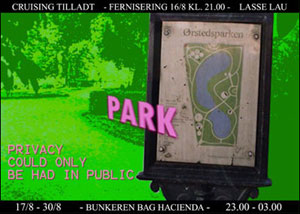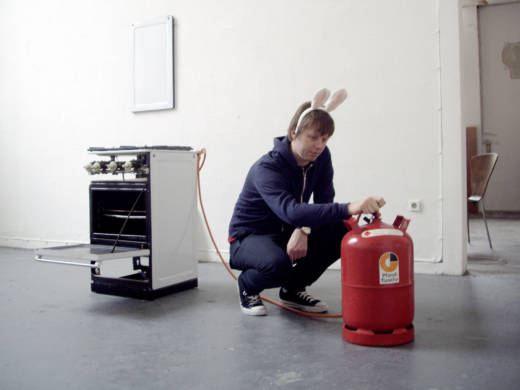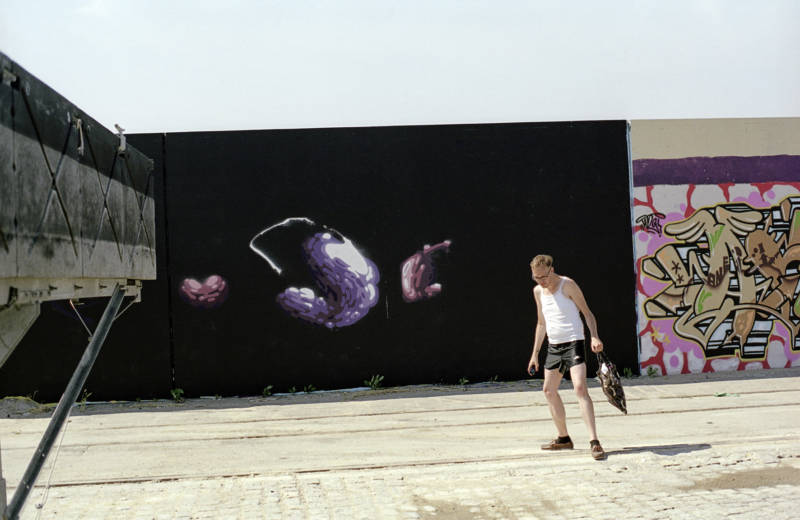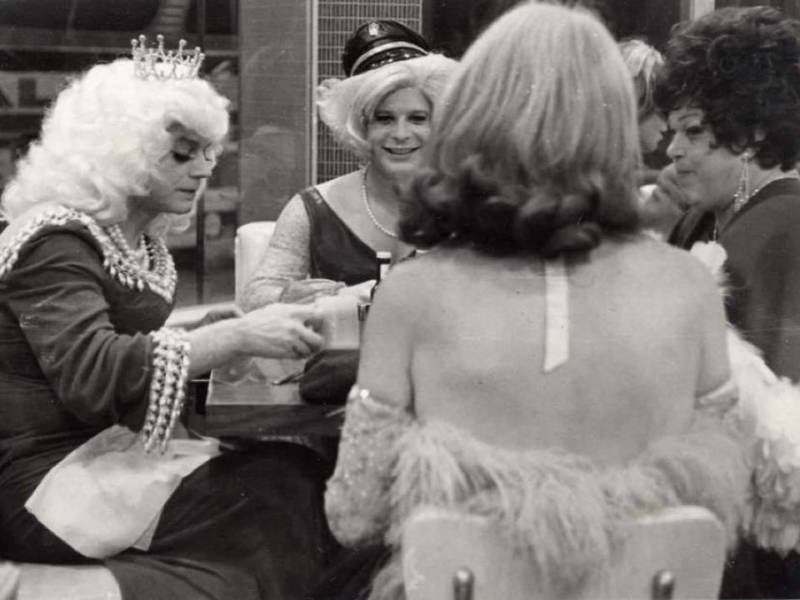Danish artist Lasse Lau’s first sexual encounters were in H.C. Ørsted public park in his hometown of Copenhagen, at the age of sixteen. After the sun set and typical parkgoers had gone home, Lau and other queer men would cruise around and hook up behind bushes.
It’s a ritual practiced in city parks all over the world. (In San Francisco, for instance, Buena Vista Park has historically been a cruising hotspot.) For people like teenage Lau, without the ability to be out about his sexuality at home or the money to rent private space, there is often only one option: to seek out a sense of privacy in public.
But after the Copenhagen city council ordered the park’s bushes to be removed, in what Lau saw as a direct attack on the local queer community’s “possibilities for self-realization in public space,” Lau began to consider how queer communities can deliberately create open spaces for themselves rather than be sequestered to the places that will have them. “How can we become our own architects?” he asked himself.
From there, Lau began his artistic practice creating installations and exploring “queer geographies” all over the world, eventually bringing him to Oakland’s Pro Arts gallery, where he’s currently in residence alongside German artist and serial collaborator Flo Maak. Their work will culminate in a show entitled Technologies of the Kitchen (Feb. 3–23), partly inspired by San Francisco’s 1966 Compton’s Cafeteria Riot — one of the first recorded riots of trans individuals in the United States.

But first: In response to the deforesting of Ørsted Park, Lau created Privacy Can Only Be Had in the Public in 2001, a guerrilla installation in a bunker in the park. He filled the bunker with potted bushes and projected images of the park’s former greenery onto a disco ball, creating a romanticized, public, cruising-friendly discotheque. The installation would open every night for visitors to enjoy however they please.





